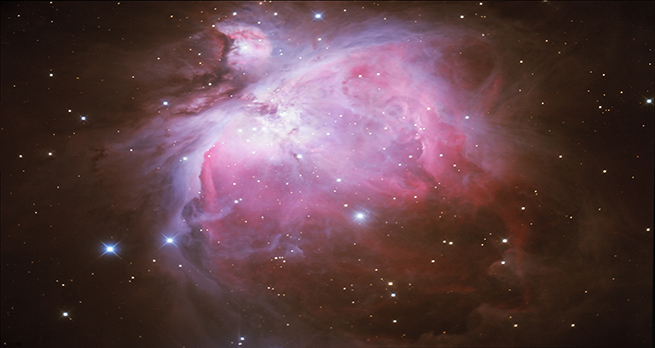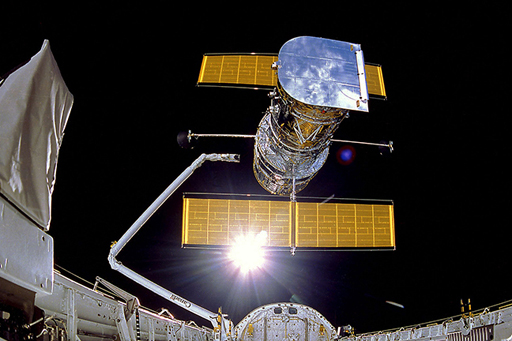3.3.3 Telescopes in space
One option, which circumvents any issues from atmospheric distortion, cloud cover or humidity and interference from city lights, is to position your telescope in space.
The disadvantages of space telescopes are their cost – which means that only relatively small instruments can be launched.
The short wavelength Gamma and X-ray radiations are blocked by the upper atmosphere, therefore objects emitting this radiation are best observed from space. Very highly-energetic objects, such as black holes, gamma ray bursts and supernovae have been recorded by ESA’s Integral Gamma Ray observatory [Tip: hold Ctrl and click a link to open it in a new tab. (Hide tip)] and NASA’s Chandra X-Ray observatory.
Ultraviolet radiation (UV) is measured from the interstellar medium and from molecular clouds, as a record of the chemical composition of the gas, dust and ice which reside there. Instruments on the Hubble Space Telescope and the GALEX observatory have made notable contributions to UV astronomy.
Because most of the infrared radiation (IR) and sub-millimetre radiation coming from space is absorbed by the atmosphere, it is more effective to observe objects emitting this wavelength radiation in space. The Spitzer space telescope and Herschel space telescope have been recent successes for NASA and ESA in this field.
Some of the most significant observations made by instruments on these telescopes are of the distribution of dust in molecular clouds, and of dust around newly-forming stars.

